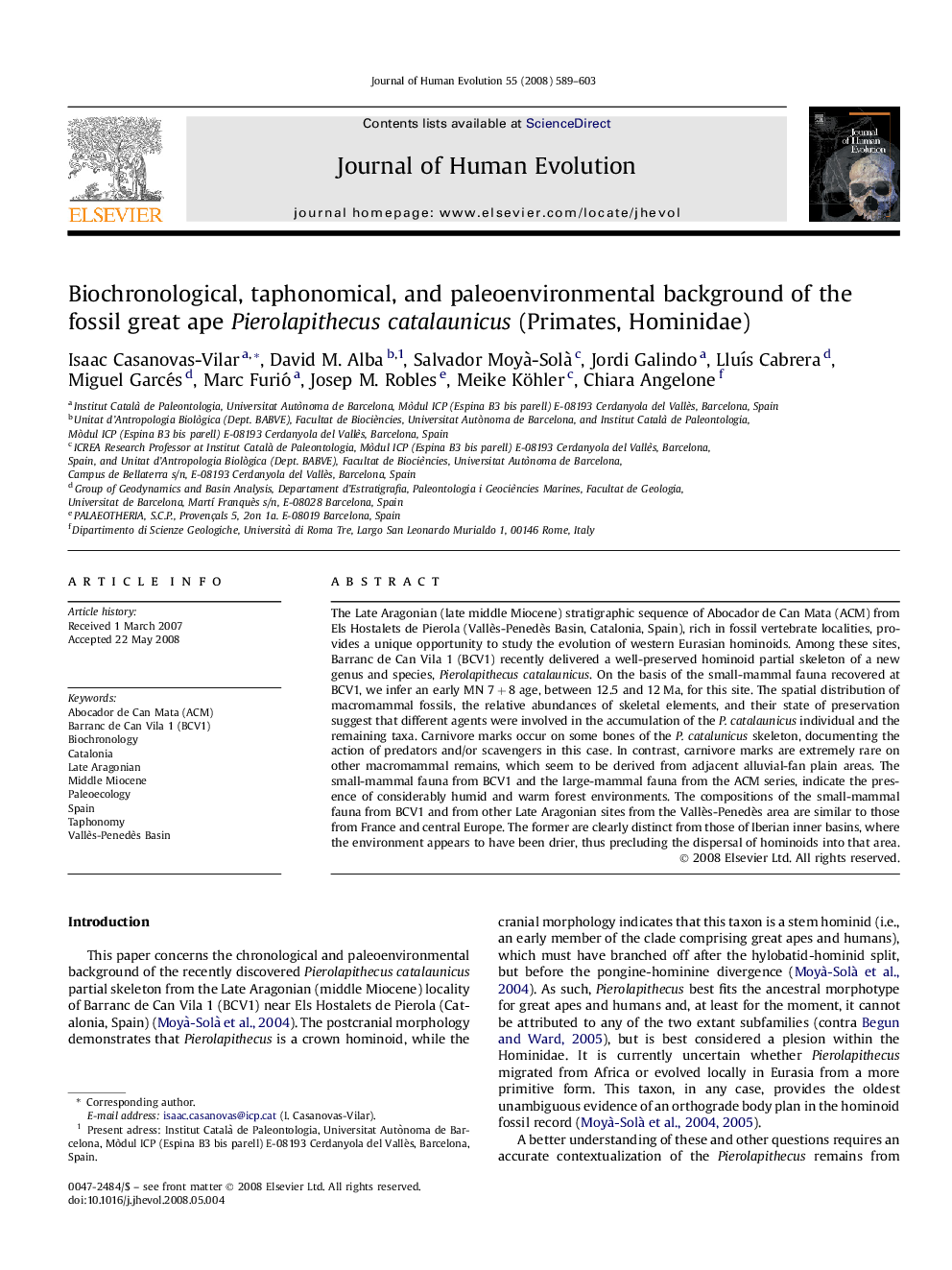| Article ID | Journal | Published Year | Pages | File Type |
|---|---|---|---|---|
| 4557236 | Journal of Human Evolution | 2008 | 15 Pages |
The Late Aragonian (late middle Miocene) stratigraphic sequence of Abocador de Can Mata (ACM) from Els Hostalets de Pierola (Vallès-Penedès Basin, Catalonia, Spain), rich in fossil vertebrate localities, provides a unique opportunity to study the evolution of western Eurasian hominoids. Among these sites, Barranc de Can Vila 1 (BCV1) recently delivered a well-preserved hominoid partial skeleton of a new genus and species, Pierolapithecus catalaunicus. On the basis of the small-mammal fauna recovered at BCV1, we infer an early MN 7 + 8 age, between 12.5 and 12 Ma, for this site. The spatial distribution of macromammal fossils, the relative abundances of skeletal elements, and their state of preservation suggest that different agents were involved in the accumulation of the P. catalaunicus individual and the remaining taxa. Carnivore marks occur on some bones of the P. catalunicus skeleton, documenting the action of predators and/or scavengers in this case. In contrast, carnivore marks are extremely rare on other macromammal remains, which seem to be derived from adjacent alluvial-fan plain areas. The small-mammal fauna from BCV1 and the large-mammal fauna from the ACM series, indicate the presence of considerably humid and warm forest environments. The compositions of the small-mammal fauna from BCV1 and from other Late Aragonian sites from the Vallès-Penedès area are similar to those from France and central Europe. The former are clearly distinct from those of Iberian inner basins, where the environment appears to have been drier, thus precluding the dispersal of hominoids into that area.
